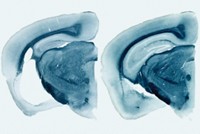Advertisement
Grab your lab coat. Let's get started
Welcome!
Welcome!
Create an account below to get 6 C&EN articles per month, receive newsletters and more - all free.
It seems this is your first time logging in online. Please enter the following information to continue.
As an ACS member you automatically get access to this site. All we need is few more details to create your reading experience.
Not you? Sign in with a different account.
Not you? Sign in with a different account.
ERROR 1
ERROR 1
ERROR 2
ERROR 2
ERROR 2
ERROR 2
ERROR 2
Password and Confirm password must match.
If you have an ACS member number, please enter it here so we can link this account to your membership. (optional)
ERROR 2
ACS values your privacy. By submitting your information, you are gaining access to C&EN and subscribing to our weekly newsletter. We use the information you provide to make your reading experience better, and we will never sell your data to third party members.
Biological Chemistry
Targeting Noncoding RNAs To Treat Heart Disease
Drug Development: Silencing long noncoding RNA prevents harmful thickening of heart muscle in mice
by Michael Torrice
February 26, 2016
| A version of this story appeared in
Volume 94, Issue 8

Not all transcribed RNAs code for proteins. The roles of these noncoding RNAs aren’t fully understood, but some regulate pathways involved in gene expression. A study now reports that one long noncoding RNA called Chast could serve as a drug target for cardiac hypertrophy, a heart disease in which cardiac muscle thickens (Sci. Transl. Med. 2016, DOI: 10.1126/scitranslmed.aaf1475). Stress to the heart, sometimes from a narrowing aorta, causes this harmful overgrowth of tissue, which impairs the organ’s function and eventually leads to heart failure. Thomas Thum of Hannover Medical School and colleagues identified Chast by inducing cardiac hypertrophy in mice and looking for noncoding RNA transcripts with increased expression levels in cardiac muscle cells. Also, the scientists found elevated levels of a human homolog of Chast in patients with a heart condition that leads to cardiac hypertrophy.The team showed that targeting




Join the conversation
Contact the reporter
Submit a Letter to the Editor for publication
Engage with us on Twitter